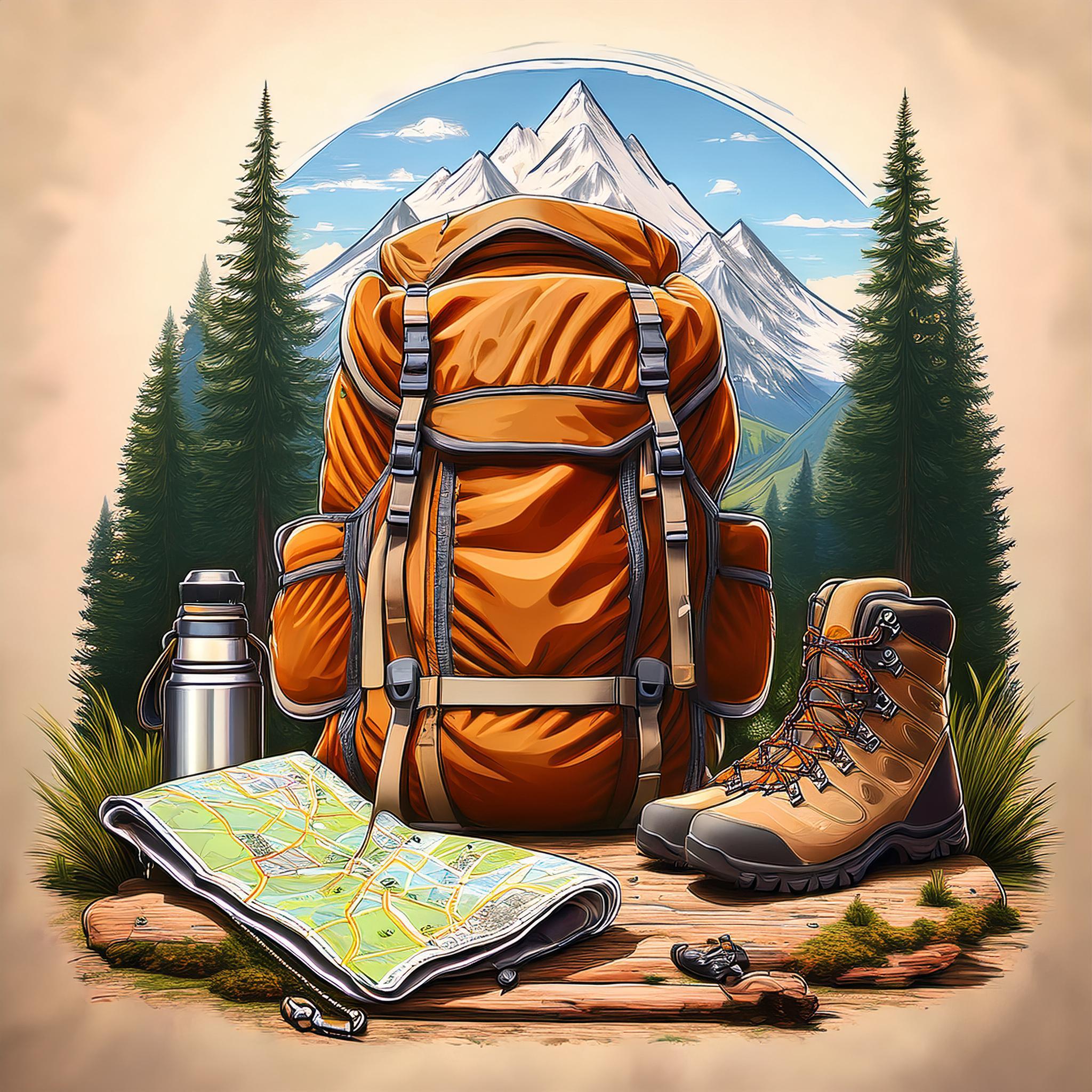
Travel Checklists

Home » The Ultimate Backpacking Checklist: 28 Essential Tips for Beginners
The Ultimate Backpacking Checklist: 28 Essential Tips for Beginners
Embark on your first backpacking adventure with confidence! Our comprehensive guide covers 28 essential tips, from choosing the right destination to packing efficiently. Learn how to prepare, stay safe, and make the most of your wilderness experience.
Ibrahim
September 18, 2024Backpacking Checklist
- Select a location that's suitable for beginners, close to home, and with a relatively short distance (a few miles roundtrip). Aim for trails with minimal elevation gain and ensure there's a water source near your campsite.
- Consult with experienced backpackers, hiking clubs, or guidebooks to plan your route. Consider factors such as distance, elevation gain, and potential campsites. Always check weather forecasts and trail conditions before your trip.
- Research and obtain any required permits for your chosen destination. Check with local land management agencies for up-to-date information on permit requirements, trail conditions, and any restrictions.
- Acquire or rent crucial backpacking equipment, including a tent, sleeping bag, sleeping pad, backpack, and stove. Ensure that your gear is lightweight and compact to minimize the load you'll be carrying.
- Select well-fitting, broken-in hiking boots or trail running shoes. Consider the terrain and your personal preferences when deciding between boots and shoes. Don't forget to pack appropriate socks.
- Bring moisture-wicking, quick-drying clothing that can be layered for adaptability to changing weather conditions. Include base layers, insulating layers, and a waterproof outer layer.
- Carry a map and compass, and know how to use them. Consider bringing a GPS device or smartphone with offline maps as a backup.
- Include a first-aid kit, emergency shelter, headlamp, fire starter, and multi-tool in your pack. Familiarize yourself with basic first aid and emergency procedures before your trip.
- Prepare lightweight, high-calorie meals and snacks. Consider freeze-dried meals, energy bars, trail mix, and other non-perishable foods. Plan for one extra day's worth of food in case of emergencies.
- Carry sufficient water and a reliable water treatment method (filter, purifier, or chemical treatment). Research water sources along your route and plan accordingly.
- Familiarize yourself with and follow Leave No Trace principles to minimize your impact on the environment. This includes proper waste disposal, camping on durable surfaces, and respecting wildlife.
- Leave a detailed trip plan with a trusted friend or family member, including your route, expected return date, and emergency contact information.
- Before your trip, set up your tent, test your stove, and ensure all equipment is in good working order. This will help you identify any issues before you're on the trail.
- Organize your backpack efficiently, placing heavier items close to your back and center. Keep frequently used items easily accessible. Aim for a pack weight of no more than 20% of your body weight.
- Train for your backpacking trip by doing day hikes with a loaded pack. Gradually increase the distance and difficulty of your training hikes to build endurance and strength.
- Familiarize yourself with essential outdoor skills such as map reading, fire starting, and basic first aid. Consider taking a wilderness first aid course.
- Research potential wildlife in the area and take appropriate precautions. Learn proper food storage techniques to protect your supplies and avoid attracting animals to your campsite.
- Bring biodegradable soap, hand sanitizer, and a small trowel for digging catholes. Follow proper guidelines for disposing of human waste and washing dishes away from water sources.
- Check the weather forecast and pack appropriate gear for potential conditions. Bring sun protection, rain gear, and extra warm layers, even if the forecast looks favorable.
- Research and follow camping regulations for your chosen area. This may include designated campsites, fire restrictions, and group size limits.
- Pack a lightweight pair of shoes or sandals for wearing around camp. This gives your feet a break from hiking boots and is useful for water crossings.
- Include items such as duct tape, gear patches, spare cordage, and a needle and thread for emergency repairs.
- Familiarize yourself with setting up and taking down your tent and other gear quickly and efficiently. This skill will save time and energy on the trail.
- Take regular breaks, stay hydrated, and snack frequently to maintain energy levels throughout your hike.
- Carry an emergency communication device like a whistle or personal locator beacon. Know basic wilderness survival skills and how to signal for help if needed.
- Follow proper trail etiquette, including yielding to uphill hikers and keeping noise levels down in camp.
- Consider bringing a small journal or camera to record your experiences. This can be valuable for reflecting on your trip and planning future adventures.
- After your trip, assess what worked well and what didn't. Use this information to refine your gear list and planning for future backpacking trips.
Score: 0%